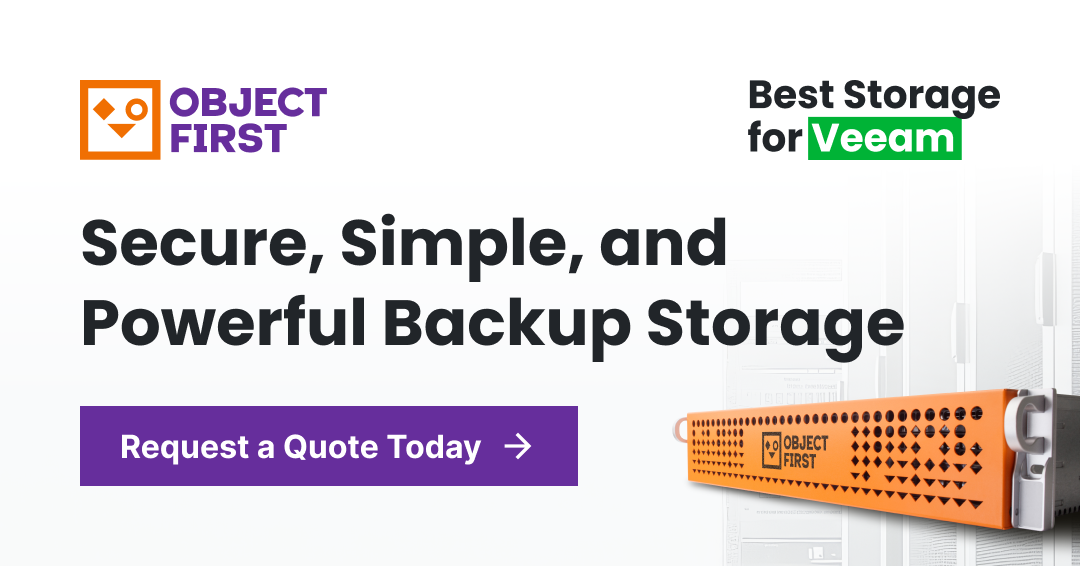Object Storage vs Block Storage vs File Storage: Understanding the Differences
When it comes to storing data, once you’ve seen one system, you’ve seen them all—right? Wrong. While many types of storage share key similarities, there are some fundamental differences that significantly affect when, where, and why you might use them.
In this guide, we’ll explore the three main storage types—Object Storage, Block Storage and File Storage—how they differ, and how you should use them.
Similarities Between Object, Block, and File Storage
Before diving into the differences between these three types of storage, let’s highlight some commonalities. Object, Block and File storage all have the following capabilities:
- Availability: They use various data persistence mechanisms to ensure data availability and reliability—from checksums and error detection codes to data replication.
- Accessibility: They allow you to access data over a network using APIs. By enabling remote access, stored data can be shared between multiple applications and users.
- Scalability: They can manage growing storage needs by providing additional resources or nodes to storage infrastructure. This makes it possible to store large amounts of data.
- Data Security: They maintain the integrity of data and keep it secure with features like encryption.
- Metadata: They all provide ways to manage metadata like file/object names, sizes, timestamps, and relevant permissions. This makes it easier to find, organize, and retrieve data.
Now that we’ve cleared up what’s similar between these different types of storage, let’s dive into the differences.
What Is Object Storage?
Object storage is a system that splits data into distinct, self-contained “objects” that are stored in a flat environment. This means there are no separate folders or subdirectories, as with file storage. Instead, each object contains its own metadata that helps with both organizing and using the data it contains.
Rather than file names, each object is accessed using a unique number or ‘object identifier.’ While objects can be stored locally on computer hard drives and cloud servers, an Application Programming Interface (API) is required to access and manage them.
Pros and Cons of Object Storage
Pros
- Capacity: Object storage allows easy storage of large amounts of unstructured data. This is particularly useful given the rise of artificial intelligence and machine learning, both of which require (and produce) huge data sets.
- Affordability: Object storage consumption is paid for on a “by-use” model. Rather than paying in advance for set amounts of storage space, you only pay for what you use.
- Scalability: You can add as much storage as you need—the limit is essentially what you’re willing to pay for.
- Easy Metadata: Metadata stored within objects allows users to quickly retrieve data and derive value from it.
- Better search: It’s simple to search for metadata, object contents, and any other relevant properties.
Cons
- No ability to lock: Any user that has access to the cloud, hardware device, or even the network where objects are stored can gain access.
- No partial modification: It’s not possible to change individual objects once created; you can only create a new object.
What Is Block Storage?
Block storage is a system whereby data is split into blocks that can be read and written individually and then stored separately with a unique identifier. Blocks can range in size from a kilobyte to several megabytes and can be stored in different environments as required—you might put one block in Linux, for instance, and the rest in Windows.
Similar to object storage, the operating system assigns each block a unique address or ‘block number.’ When users decide to retrieve a block, the separate blocks are recombined into one unit. Block storage is the go-to format for hard disk drives and any frequently updated data; it’s easily stored in both Storage Area Networks (SANs) and cloud storage environments.
Pros and Cons of Block Storage
Pros
- Speed: Provided blocks are stored close together or locally, block storage offers low latency for data retrieval.
- Reliability: Block storage has a low fail rate, as blocks are stored in self-contained units.
- Easily modifiable: There’s no need to create a new block when modifying data, as block storage allows the creation of new versions.
Cons
- Lack of metadata: Block storage uses limited metadata, which reduces functionality when working with unstructured data.
- Poor search: Limited search functionality makes managing large volumes of block data difficult.
- High cost: Block storage is expensive, especially on a large scale.
What Is File Storage?
File storage is a system of storing data in a single file determined by the tool used to create the file or file type: .jpg, .docx, or .txt.
File storage uses a hierarchical structure where users organize individual files into folders and subfolders, making it simple to find and manage files. Retrieving a file means simply selecting the file path, including any sub-directories or file names. Files are most often managed with the help of a file system.
Pros and Cons of File Storage
Pros
- Easy to access: Files are easy to locate, open, view or, modify, and then save.
- Familiarity: File storage is common to most end users and those with basic IT skills. Little assistance or training is required.
- User management: End users can create, move, edit, and delete files without any additional help; only a simple file management interface is required.
- Lockable access: Files can be set as written (editable), read-only (viewable), or locked (accessible only to specific users). Password protection can also be enabled at a file level.
Cons
- Complex at large scale: File management can become very complicated when the number of folders, subfolders, and files increases significantly. Search functions are far less effective with a large number of files, resulting in wasted time.
- Less suitable for unstructured data: Unstructured data is not best suited to file storage, especially in large amounts.
- Expensive at large scale: When storage space runs out, additional (often expensive) hardware is required.
Key Differences Between Object, Block, and File Storage
The below table offers a simple summary of how object, block, and file storage stack up against a range of parameters:
| Object Storage | Block Storage | File Storage | |
|---|---|---|---|
| How it’s stored | Scalable buckets | Fixed-size blocks | Hierarchical folders and directories |
| Volume | High data volumes | High data volumes | Lower data volumes |
| Data management | Custom metadata | Limited search and analytical capabilities | Simple file management (for smaller data sets) |
| Cost | Cost-effective, pay-as-you-go pricing | Storage purchased as fixed blocks; can be expensive | New storage devices required to scale; can be expensive |
| Performance | Slower performance, longer processing times | Fast and high performance | Slower performance with higher data volumes |
| Scalability | High scalability | Limited scalability | Limited scalability |
Best Use Cases for Each Storage Type
The individual strengths and differences of object, block, and file storage means that each lends itself well to specific use cases:
- Object Storage: High scalability, the capacity to manage large data volumes, and the use of custom metadata make this format best suited to large volumes of unstructured data. This makes it ideal for backups, media storage, analytics, and IoT data.
- Block Storage: Given its high speeds and high performance, block storage is best suited to situations where data is required quickly. Examples include virtual machines, databases, and enterprise applications.
- File Storage: This system is best suited to smaller data sets and situations where multiple users need access to files. Shared file systems, content management, and small business storage are all great examples.
Ultimately, the type of storage you select will depend on your specific needs. Making the right choice requires two steps:
- Consider what you need the storage for (is it a backup, database, shared file system, or something else?).
- Figure out the key criteria you’re looking for (is it speed, scalability, low price, or another factor?).
Ootbi—Best Object Storage for Backups
When it comes to backups, nothing beats object storage—and Ootbi (Out-of-the-box Immutability) is the best storage for Veeam.
Ootbi delivers secure, simple, and powerful on-premises backup object storage for Veeam customers, guaranteed to be ransomware-proof all without the need for specialized security expertise.
Built on the latest Zero Trust Data Resilience (ZTDR) principles, Ootbi leverages S3 Object Lock to provide built-in, automated data immutability purpose-built for Veeam Data Platform.
Download a whitepaper and learn why Ootbi is the best storage solution for your Veeam environment.


